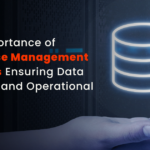Unlock the potential of data with Oracle 21c’s AutoML—a game-changing tool that serves as your intelligent data analytics assistant. In today’s business landscape, machine learning is indispensable for unlocking valuable insights and making informed decisions. However, the complexity of building and deploying machine learning models poses a challenge. AutoML steps in as a smart friend, automating the entire process and providing a seamless experience even for users without extensive data science knowledge.
Discover the power of Oracle 21c’s AutoML, a tool that makes understanding data a breeze. Imagine having a smart assistant for data analytics – that’s exactly what AutoML is. It’s like having a super-smart friend who helps you figure out all the important stuff from your data without needing a tech degree.
In today’s business landscape, the importance of machine learning cannot be understated. Machine learning can help businesses unlock valuable insights from their data and make better decisions.
However, building and deploying machine learning models can be a complex and time-consuming process that requires extensive data science expertise.
That’s where AutoML comes in. AutoML is a machine learning tool that automates the process of building and deploying machine learning models. It’s designed to simplify the process of creating models, particularly for users who don’t have extensive data science experience.
AutoML Tasks: AutoML handles critical tasks like data preprocessing, ensuring clean and transformed datasets. It adeptly manages missing data, encodes categorical variables, and scales features. The tool also automates feature selection, using techniques like correlation analysis, feature importance scores, and embedded methods. Model selection is simplified through statistical tests, metalearning, and ensemble methods, allowing AutoML to choose the best algorithm based on data characteristics.
Hyperparameter Tuning: AutoML automates hyperparameter tuning, optimizing settings crucial for a model’s performance. Techniques like grid search, random search, and Bayesian optimization are employed, ensuring the chosen algorithm operates at its best. This automated process ensures that the model is finely tuned for the specific task, significantly enhancing its overall performance.
Model Deployment: Model deployment, the process of making machine learning models available for production use, is also automated by AutoML. The tool creates an API endpoint for the trained model, facilitating integration with other applications. Additionally, AutoML manages model versioning, monitoring, and scaling, ensuring businesses can seamlessly incorporate machine learning into their workflows without the need for extensive data science expertise.
Empowering Businesses: Oracle 21c’s AutoML transforms the landscape of machine learning by automating complex tasks. Businesses, regardless of size, can now efficiently build and deploy machine learning models, making data-driven decisions and gaining a competitive edge. Simplify your journey into the future of machine learning with Oracle 21c’s AutoML, where innovation meets simplicity.
And now, with Oracle’s 21c release, AutoML is integrated with Oracle’s existing machine learning tools, including Oracle Machine Learning and Oracle Autonomous Database, to provide a complete machine learning solution.
AutoML automates many of the time-consuming and complex tasks involved in building and deploying machine learning models. It performs the following tasks:
Data preprocessing is an important step in building machine learning models because it involves transforming raw data into a format that can be used by machine learning algorithms. In AutoML, this step is automated to simplify the machine learning process. Data preprocessing is the process of cleaning and transforming the dataset to prepare it for use in a machine learning model. AutoML automates this process by automatically handling missing data, encoding categorical variables, and scaling features.
- Handling Missing Data: Missing data can occur in a dataset for various reasons, such as human error, system error, or incomplete data. AutoML can handle missing data using techniques such as mean imputation, regression imputation, K-Nearest Neighbor (KNN) imputation, or multiple imputation.
- Encoding Categorical Variables: Categorical variables are variables that take on a limited number of discrete values. They can be nominal, ordinal, or binary. AutoML can encode categorical variables using techniques such as one-hot encoding, ordinal encoding, or target encoding. One-hot encoding creates a binary vector for each category, while ordinal encoding assigns a numerical value to each category. Target encoding uses the target variable to encode each category.
- Scaling Features: Scaling features is important because machine learning algorithms can be sensitive to the scale of the input features. AutoML can scale features using techniques such as standardization, min-max scaling, or robust scaling. Standardization scales the features to have a zero mean and unit variance, while min-max scaling scales the features to a range between 0 and 1. Robust scaling scales the features based on their median and interquartile range.
Feature Selection is the process of selecting the most relevant features from the dataset to include in the machine learning model. AutoML automates this process by automatically selecting the most relevant features using techniques such as correlation analysis, feature importance scores, and embedded methods.
- Correlation Analysis: Correlation analysis measures the strength of the relationship between two variables. AutoML can use correlation analysis to identify pairs of features that are highly correlated with each other. This allows AutoML to select the most relevant feature from each pair, reducing the number of features in the dataset.
- Feature Importance Scores: Feature importance scores measure the contribution of each feature to the performance of the model. AutoML can use feature importance scores to rank the features based on their importance and select the most relevant ones.
- Embedded Methods: Embedded methods are machine learning algorithms that include feature selection as part of the learning process. AutoML can use embedded methods such as Lasso Regression, Ridge Regression, or Decision Trees to select the most relevant features during training.
Model Selection is the process of selecting the best machine learning algorithm for a given task based on the characteristics of the data. AutoML automates this process by automatically selecting the best algorithm from a range of options based on the data.
AutoML uses various techniques to select the best algorithm, including statistical tests, metalearning, and ensemble methods.
- Statistical Tests: Statistical tests compare the performance of different algorithms on the same dataset to determine which one is the best. AutoML can use statistical tests such as t-tests or ANOVA to compare the performance of different algorithms.
- Meta-Learning: Meta-learning is the process of using historical data about the performance of different algorithms to select the best algorithm for a new task. AutoML can use meta-learning to select the best algorithm based on historical data about the performance of different algorithms on similar tasks.
- Ensemble Methods: Ensemble methods combine the predictions of multiple machine learning algorithms to improve the overall performance of the model. AutoML can use ensemble methods such as bagging, boosting, or stacking to combine the predictions of multiple algorithms.
What tasks does Oracle 21c’s AutoML automate in the machine learning process?
Oracle 21c’s AutoML automates crucial tasks such as data preprocessing, feature selection, model selection, hyperparameter tuning, and model deployment in the machine learning process. This revolutionary tool simplifies the complexities, enabling businesses to harness the power of machine learning effortlessly.
Hyperparameters are settings that control the behaviour of the machine learning algorithm.
Examples of hyperparameters include the learning rate, the number of hidden layers in a neural network, the number of trees in a random forest, and the regularization parameter. Tuning these hyperparameters is critical for achieving the best possible performance from the model.
In AutoML, hyperparameter tuning is automated to simplify the machine learning process. AutoML will automatically tune the hyperparameters of the chosen algorithm to optimize the model’s performance.
For example, if the algorithm is a neural network, AutoML can tune the hyperparameters such as the number of hidden layers, the number of neurons in each layer, and the learning rate. Tuning these hyperparameters can significantly improve the performance of the model.
AutoML uses various techniques to tune the hyperparameters, including:
- Grid Search: Grid search is a brute-force approach that exhaustively searches over a predefined range of hyperparameters. AutoML can use grid search to try out different combinations of hyperparameters and select the one that results in the best performance.
- Random Search: Random search is similar to grid search, but instead of searching over a predefined range of hyperparameters, it randomly samples hyperparameters from a probability distribution. AutoML can use random search to efficiently explore the hyperparameter space and find a good combination of hyperparameters.
- Bayesian Optimization: Bayesian optimization is a probabilistic approach that uses previous observations to update a probabilistic model of the objective function. AutoML can use Bayesian optimization to iteratively select hyperparameters that are likely to result in the best performance based on previous observations.
Easy Data Insights with Oracle 21c’s AutoML
AutoML can also perform hyperparameter tuning using a combination of these techniques. For example, AutoML can first use grid search to narrow down the hyperparameter space, then use Bayesian optimization to fine-tune the hyperparameters.
Hyperparameter tuning in AutoML simplifies the process of building machine learning models by automating the selection of the optimal hyperparameters for the chosen algorithm. This ensures that the model is optimized for the specific task at hand and can significantly improve its performance.
Get ready for a data revolution! Oracle 21c’s AutoML isn’t just another tool; it’s a glimpse into the future. Its super-smart features mean you can say goodbye to old-fashioned data methods. Whether you’re a big corporation or a small business, Oracle 21c fits right in, helping you compete with the big players.
Model deployment is the process of making the machine learning model available for use in a production environment. This involves creating a system that can handle incoming data, make predictions using the trained model, and provide results to the end-user.
In AutoML, model deployment is automated to simplify the process of building and deploying machine learning models. Once the machine learning model is trained and optimized, AutoML will deploy the model to a production environment, making it available for use by other applications.
AutoML will provide an API endpoint for the model, enabling other applications to call it and make predictions. For example, if the model is trained to predict customer churn, it can be deployed to a web application that provides churn predictions for each customer. Other applications can send data to the API endpoint, and the trained model will use the data to make predictions and send the results back to the calling application.
AutoML can also handle tasks such as model versioning, monitoring, and scaling. For example, AutoML can version control the trained models, allowing businesses to keep track of changes to the model over time. AutoML can also monitor the performance of the model in production and alert businesses if the performance drops below a certain threshold. Additionally, AutoML can scale the model to handle high volumes of incoming data and user requests.
Model deployment in AutoML simplifies the process of building and deploying machine learning models by automating the deployment process and providing businesses with an API endpoint to call the model.
This makes it easy for businesses to integrate machine learning models into their existing workflows and applications, allowing them to take advantage of the benefits of machine learning without requiring extensive data science expertise.
AutoML in Oracle 21c automates many of the time-consuming and complex tasks involved in building and deploying machine learning models. This allows businesses to take advantage of the benefits of machine learning, even if they don’t have extensive data science expertise.
AutoML simplifies the process of building machine learning models by automating data preprocessing, feature selection, model selection, hyperparameter tuning, and model deployment. With AutoML, you can build and deploy machine learning models quickly and efficiently, enabling you to make data-driven decisions and gain a competitive advantage.
Ready to harness the power of machine learning without the complexity? Dive into the future with Oracle 21c’s AutoML, seamlessly integrated into our solutions at Simple Logic.
Empower your business with automated insights, efficient model deployment, and optimized decision-making. Explore the possibilities and make data-driven decisions effortlessly. Read our blog to embark on the journey of simplified machine learning with Simple Logic – where innovation meets simplicity!
Key Takeaways!
Oracle 21c’s AutoML is a revolutionary tool integrated with Oracle’s machine learning suite, streamlining the complex process of building and deploying machine learning models. From automated data preprocessing, feature selection, and model selection to hyperparameter tuning and deployment, AutoML empowers businesses to harness the power of machine learning without requiring extensive data science expertise.







